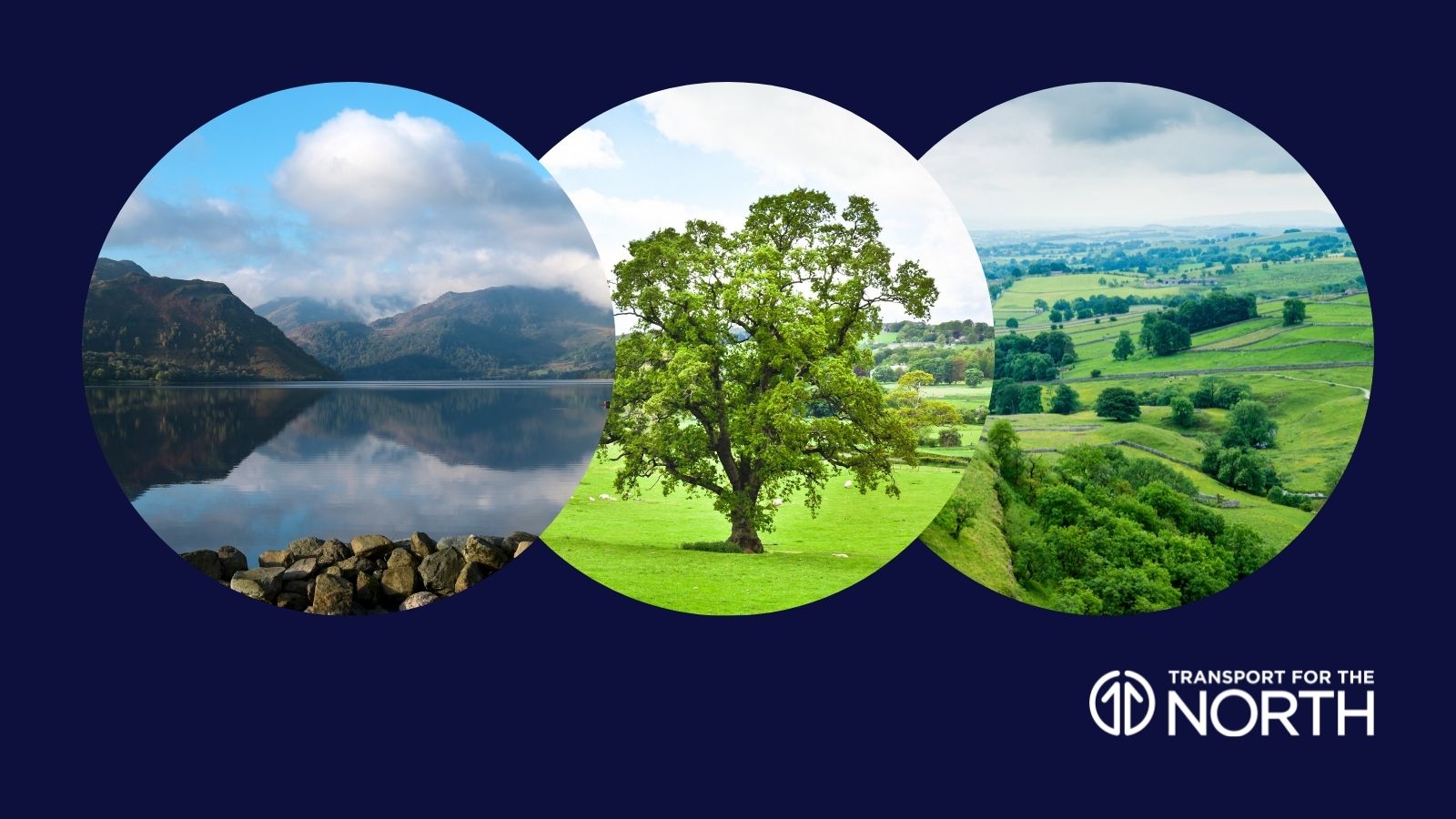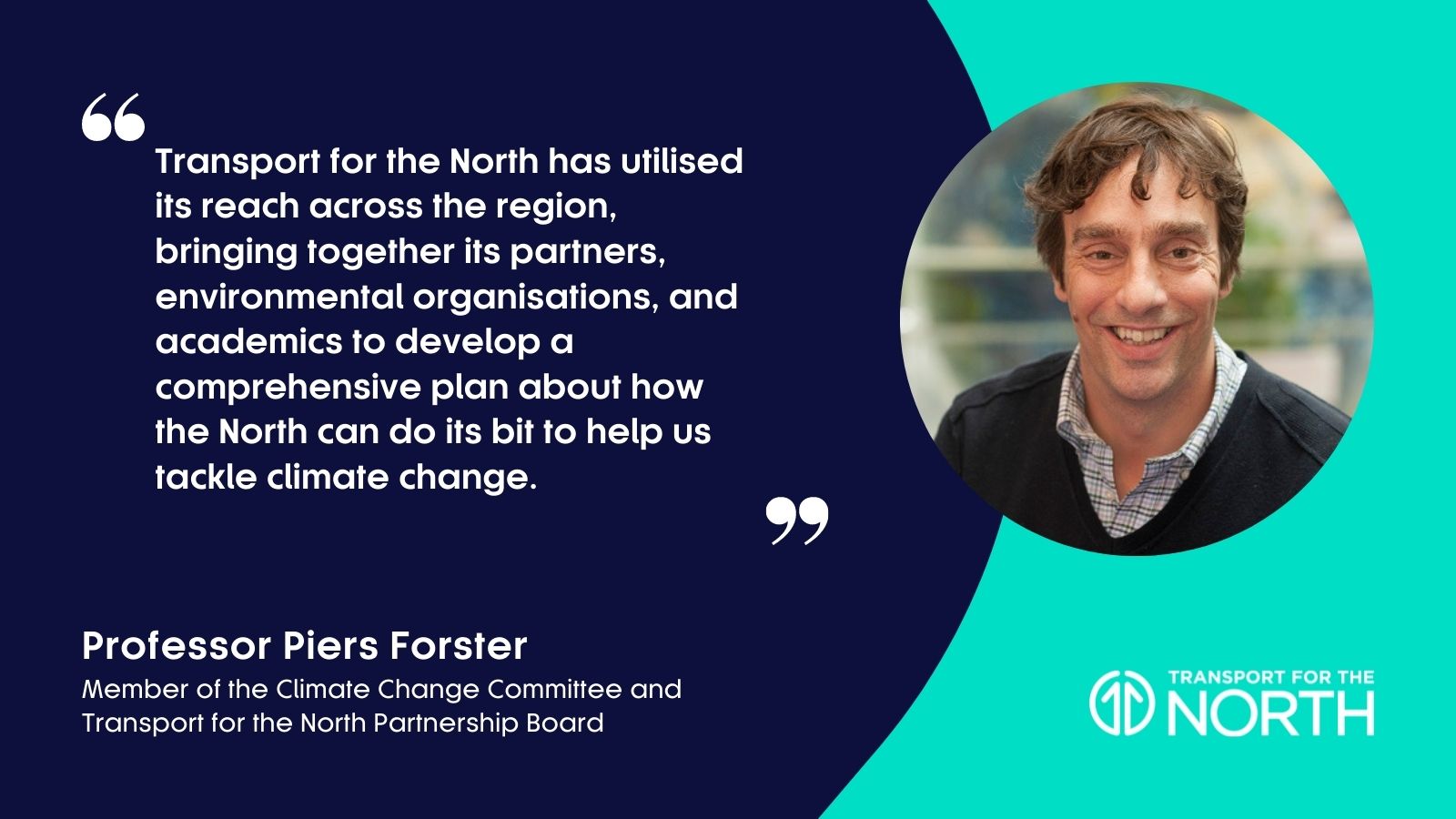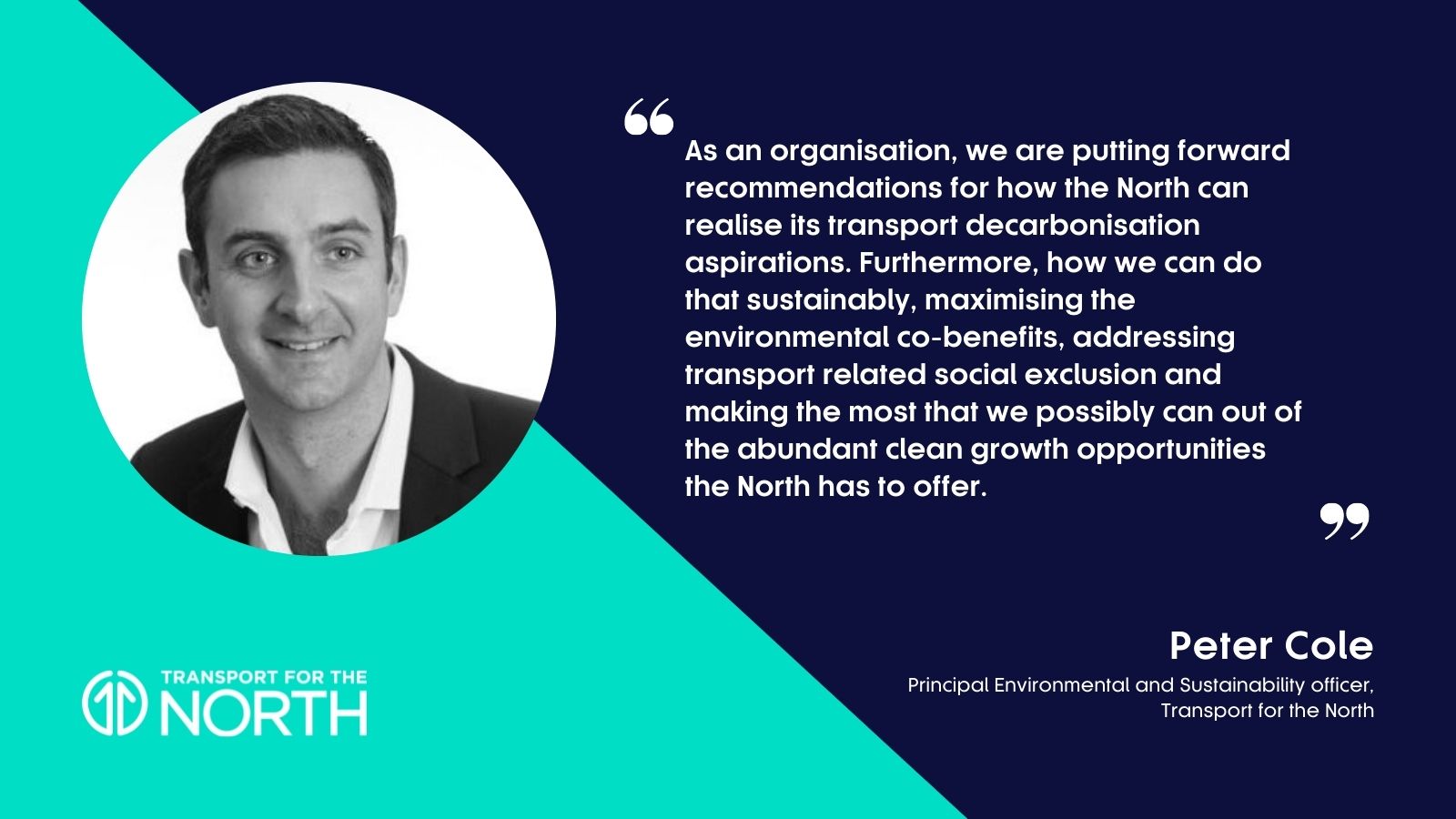Following the launch the first regional transport decarbonisation strategy we look at how we’re bringing together the North to speak as one voice on an approach to the climate emergency.
As we’re all aware, decarbonisation is a huge challenge facing us over the coming decades, but that doesn’t mean it is a problem for tomorrow.
It’s taken hundreds of years to get to the point we are now, where we have only a few years to reverse the damage that has been done.
It will take small steps from everyone to help us get there – from agreements at the very top, such as the Paris Agreement, to personal decisions such as acknowledging the carbon footprint of a meal you might eat. Between those two sides lie continental, national, and regional steps that need to be taken.
Transport for the North (TfN) has launched a consultation on its decarbonisation strategy – approved by civic and business leaders across the North; this is the first regional strategy of its kind in the UK – when finalised, it can set the benchmark for how other regions can take this approach.

Professor Piers Forster, a member of the Climate Change Committee and sits on the Transport for the North Partnership Board, said: “I think the work that is being done here in the North is excellent.
“Transport for the North has utilised its reach across the region, bringing together its partners, environmental organisations, and academics to develop a comprehensive plan about how the North can do its bit to help us tackle climate change.”
With that in mind, the strategy isn’t just about solutions. It also isn’t about showing us something we didn’t already know. It is about collating and harnessing the experience, skills and natural resources already existing in the North and turning that into an achievable vision for decarbonisation and transport.

Just like each country will have different obstacles to overcome, the areas of the North are no different – an urban city centre will have very different challenges to a rural county, for example. Understanding how these challenges can be brought together to reach a common goal is the key to this strategy, and its use will be found when articulating the transport priorities for the region.
Transport for the North’s analysis indicates around 70% of road transport emissions in the region originate from trips on the Major and Strategic Road Networks. This means TfN can play an important role in reducing these emissions, but we all know that is much easier said than done. Understanding where people need to go, how they travel, and what the local needs are at either end that will be crucial.
There are some strong, but more importantly, realistic, undertakings included in the strategy: a 55% reduction in emissions from 2018 by 2030, primarily through mode-shift and demand reduction, and a 95% reduction in emissions from 2018 by 2040, aided by technological improvements, such as zero-emission vehicles. Also, a close-to-zero target date of 2045 for carbon emissions from surface transport in the North – faster than national policy.
The understanding of local needs and cooperation between different areas of the North has shown with the right effort we can squeeze the marginal improvements that will be so important to hit the challenging targets we face.

Peter Cole, Transport for the North’s Principal Environmental and Sustainability officer, said: “Our members have been very clear about how they see a role for the Transport for the North in tackling climate change and decarbonisation and the ambition they’d like to see expressed.
“As an organisation, we are putting forward recommendations for how the North can realise its transport decarbonisation aspirations. Furthermore, how we can do that sustainably, maximising the environmental co-benefits, addressing transport related social exclusion and making the most that we possibly can out of the abundant clean growth opportunities the North has to offer.
“We very much hope that people will look at this strategy, understand where we want to go and agree but, of course, we need to make sure it’s as good as it can be, so we would welcome any comments that come through – as with all of our work, it is by the North and for the North, so the more input and knowledge we can build in to our strategy, the better it will be.”

Of course, having a regional strategy is one important piece of the puzzle, and as comprehensive as it can be following the consultation, there are levers that need to be pulled elsewhere, particularly at a national level.
To begin with, Transport for the North is an advisory body to Government. It does not have the power to utilise and implement any of the undertakings needed in the same way as Westminster. The need for certainty on the role of Sub-National Transport Bodies (STBs) is crucial and the Government would be ‘missing a trick’ not utilising the evidence base being prepared by TfN and other STBs, as well as the strong local relationships that have been forged.
Even with additional powers, there are a number of aspects that need to be resolved nationally and locally. The more ‘applied’ of these are set out as recommendations within TfN’s Decarbonisation Strategy, but some of the overarching issues that need to be tackled urgently are:
It may be the much-anticipated publication of the Government’s Transport Decarbonisation Plan will answer some of these questions.
There is no doubt that having a regional decarbonisation strategy is a positive step, and even without the necessary powers, it will provide context for Transport for the North’s partners, a coordinated message from the North to Government, and a template for other regions.
If it is to truly make a difference, however, the North needs both the power to implement it, and the public and private sectors to join the Northern journey.
The consultation on Transport for the North’s Decarbonisation Strategy was launched on Monday 7 June and runs for 12 weeks.
A version of this article was originally published on greenallianceblog.org.uk.